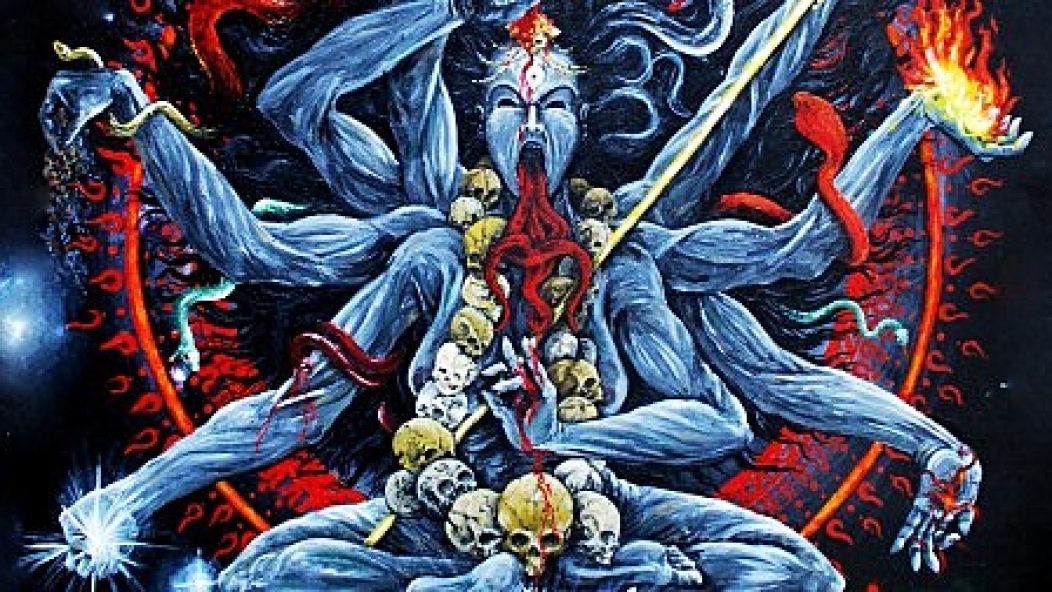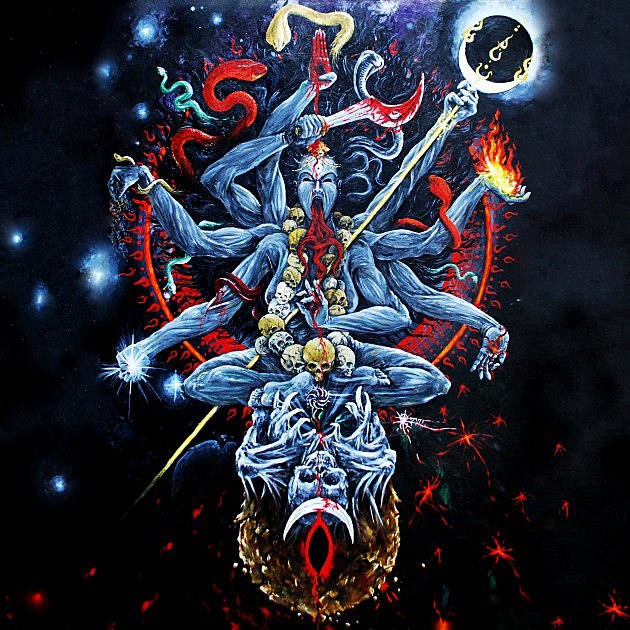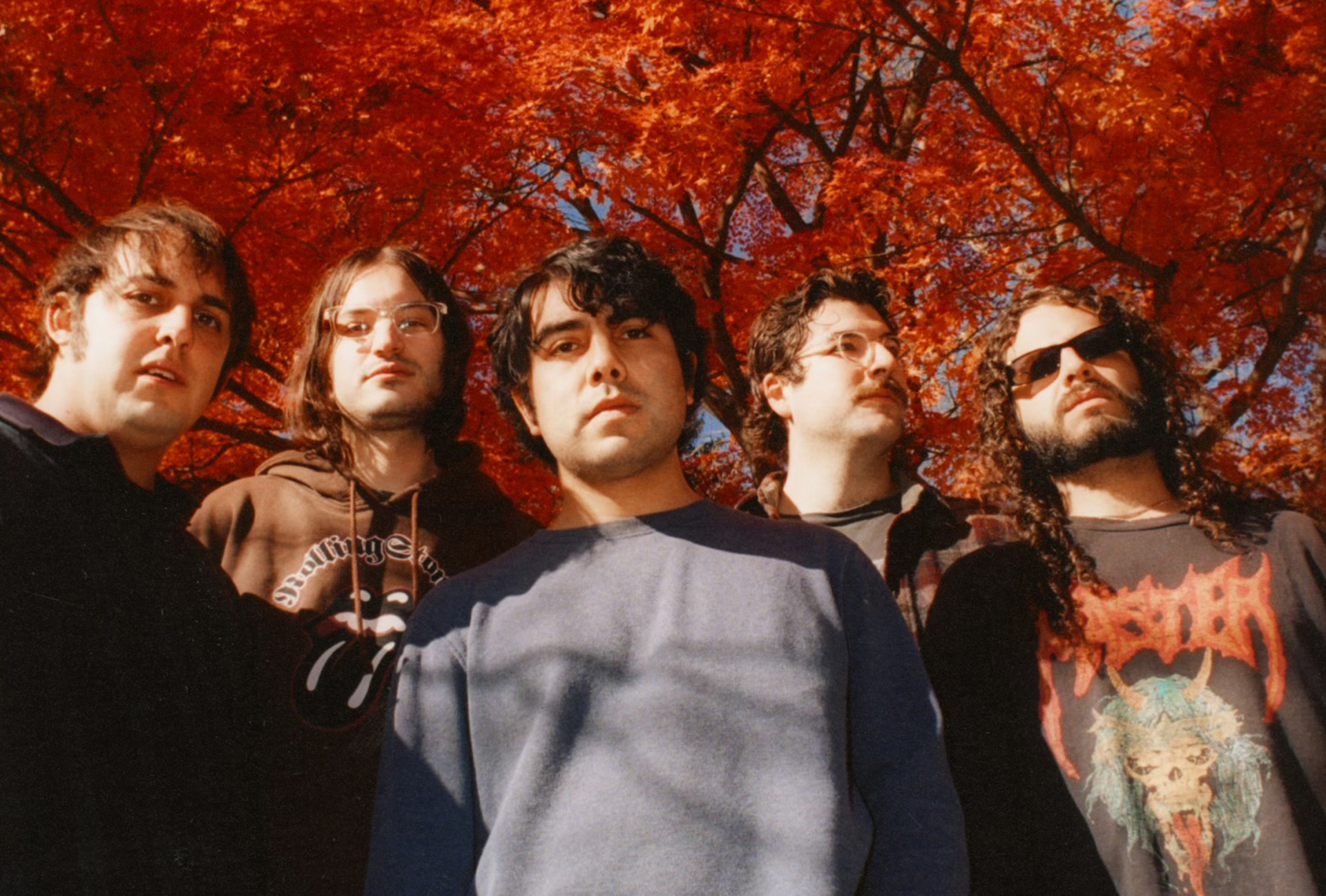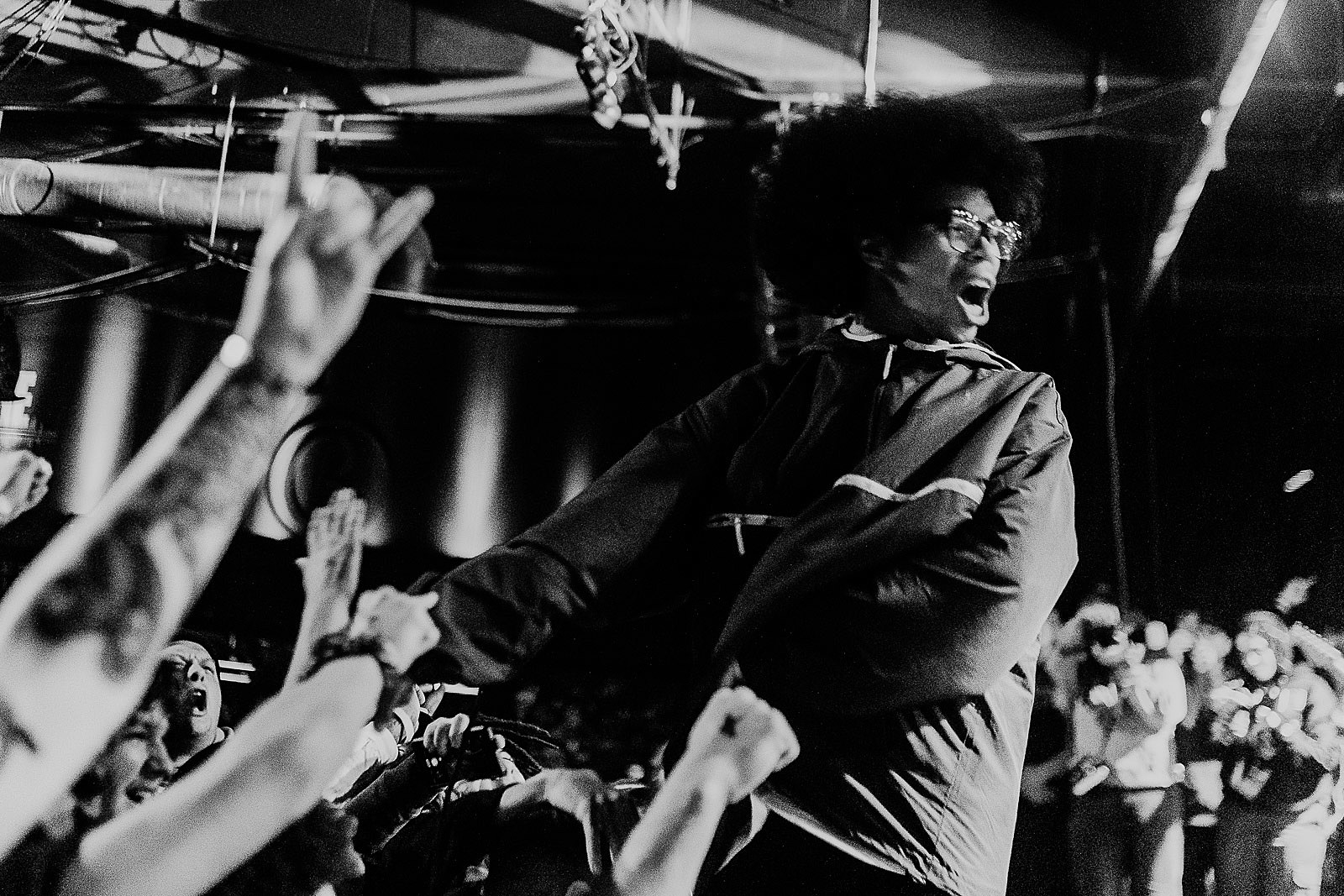
Album debut: Cult of Fire — मृत्युकावीभत्सनृत्य
…
…
Cult of Fire‘s मृत्युकावीभत्सनृत्य isn’t quite the grey-matter-splatterer suggested by its title, especially the ?-heavy variation displayed if your browser lacks some languages. As they did on their 2012 LP debut, Triumvirát, the Czech trio continue to stretch out in the codified traditionalism of black metal’s second wave. Sure, there’s an overt Eastern spiritualism salving the howls ala Rudra, but that’s not much of a comparison. In fact, modern reference points on the whole are rather inaccurate. Unlike most of the nouveau, Cult of Fire don’t work like hell to get away from where black metal has been. They’re perfectly content within the well-worn walls of before. That makes them unique compared to avant-grafters who weld blasts upon surrogate styles. Cult of Fire stick out by not trying to be unique at all.
That’s an obscene slice of Spockian objectiveness to mention when मृत्युकावीभत्सनृत्य is blooming over eight tracks and nearly 48 minutes. It’s a special little thing. Perhaps that’s because it doesn’t wear black metal in the way teenagers wear band shirts. Cult of Fire appear comfortable under their own cowls. This isn’t a tribute, nor is it retcon-ing a history constantly fictionalized by shipping-obsessed genre nerds. It is Cult of Fire. They have their own voice. It may be colored with the inflections of its family and mentors, but the voice has lived enough to earn its own ticks. Heck, the body has its own scars. And, like Lykathea Aflame before them, those lessons learned provide a script of mantras extolling the unexpected, sweeping beauty of a metal state of mind.
It’s easiest to notice the auxiliary pieces first. Tracks are splashed with Deep Purple organs and snatches of sitars, all vibrating within the celestial repetition of focused energy. On paper, these ingredients read like music by Mad Libs. However, they’re so confidently integrated that you won’t question the choices. They operate within the same mystical tonal range as a corporate leader blessed with healing obfuscation. The difference? It’s honest. But, it does get you over the initial cynicism. Once replays start to creep into the teens, the spices fade. You no longer need them. They have become just a smidgen of the complex flavor.
For instance, Infernal Vlad’s guitars could melt a mood ring. All the requisite descriptors — ripping, meditative, bruising — apply and then some. He’s the Lon Chaney of the dark arts. He hungers for Transylvania here, becomes Bartok there, knits in Pandit Pran Nath whenever he can. He plays big (“शव साधना” would crick Immortal’s necks worse than front row IMAX seats), and he plays small (his trem leads are nursery rhyme efficient). Wherever he heads, his flight path is always checked by drummer Thomas Coroner’s sensibly functional rhythms and Devilish’s rich, humanizing rasp. Everyone knows that writing lasting music requires work, but these three allow themselves to get free on the side-closing devotions. Petr “Ptoe” Tománek would be pleased. “काली मां” and “दिव्य प्रेम की ज्वाला से दग्ध” depart the terrain through pried third eyes and are propelled by the effort expended getting a drone within the crosshairs of your chakras. It doesn’t sound like them, but it feels like Enslaved for the first time. Except it keeps feeling like Enslaved. The crunch of fresh snow. Every spin. So, maybe the bazillion question marks some see aren’t so much a question, but wordless awe, marveling at what black metal was and what it can still be.
…
मृत्युकावीभत्सनृत्य comes out on November 28th via Iron Bonehead Productions. Read Ian’s profile of Cult of Fire drummer Tom Coroner here.
…












